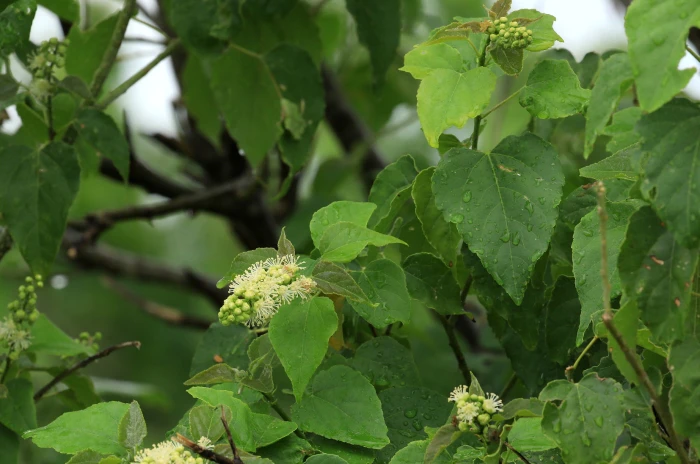Large Fever Berry
(Croton megalobotrys)
Large Fever Berry (Croton megalobotrys)
/
/

Wynand Uys
CC BY 4.0
Image By:
Wynand Uys
Recorded By:
Copyright:
CC BY 4.0
Copyright Notice:
Photo by: Wynand Uys | License Type: CC BY 4.0 | License URL: http://creativecommons.org/licenses/by/4.0/ | Rights Holder: Wynand Uys | Publisher: iNaturalist | Date Created: 2021-01-15T11:56:46-08:00 |

























Estimated Native Range
Climate Requirements for Frederick, Maryland
| This Plant | Your Site | Plant Suitability for Your Location | ||
|---|---|---|---|---|
| • Precipitation | 13" - 47" | 38" | Aquatic | Aquatic |
| • High Temp. | 73°F - 99°F | 88°F | Your summer temperatures are normal for this plant. | Excellent |
| • Low Temp. | 34°F - 57°F | 23°F | Your winter temperatures may be too cold for this plant | Too cold |
This plant may not grow well at your location - your precipitation is too high.
Summary
Croton megalobotrys, commonly known as Large Fever Berry or Large-leaved Croton, is a deciduous shrub or small tree native to the woodland and forest margins of Southern Africa, particularly thriving in bushveld and along stream banks. It is often found on sandy or rocky soils. This species typically grows at a moderate rate to a height of 10-20 feet (3-6 meters) and a width of 10-15 feet (3-4.6 meters). The Large Fever Berry is characterized by its large, broad leaves and inconspicuous yellow flowers that bloom in the spring. The flowers may not be showy, but they are followed by distinctive three-lobed capsules that split open to reveal bright red seeds, which are quite ornamental.
The Large Fever Berry is valued for its attractive foliage and the striking contrast of its red seeds against the greenery, making it a unique ornamental plant. It is used in gardens and landscapes for shade, as a focal point, or for naturalizing areas. It is adaptable to full sun or part shade and prefers medium or fast-draining sandy or loam soils. While it requires medium amounts of water, it is somewhat drought-tolerant once established. Gardeners should be aware that the sap of Croton megalobotrys can be irritating to the skin and toxic if ingested, and it may cause allergic reactions in sensitive individuals.CC BY-SA 4.0
The Large Fever Berry is valued for its attractive foliage and the striking contrast of its red seeds against the greenery, making it a unique ornamental plant. It is used in gardens and landscapes for shade, as a focal point, or for naturalizing areas. It is adaptable to full sun or part shade and prefers medium or fast-draining sandy or loam soils. While it requires medium amounts of water, it is somewhat drought-tolerant once established. Gardeners should be aware that the sap of Croton megalobotrys can be irritating to the skin and toxic if ingested, and it may cause allergic reactions in sensitive individuals.CC BY-SA 4.0
Plant Description
- Plant Type: Shrub, Tree
- Height: 10-20 feet
- Width: 10-15 feet
- Growth Rate: Moderate
- Flower Color: Yellow
- Flowering Season: Spring
- Leaf Retention: Deciduous
Growth Requirements
- Sun: Full Sun, Part Shade
- Water: Medium
- Drainage: Medium, Fast
Common Uses
Bird Garden, Drought Tolerant, Low Maintenance
Natural Habitat
Woodland and forest margins, bushveld, and along stream banks in Southern Africa
Other Names
Common Names: Large-leaved croton, Fever tree
Scientific Names: Croton megalobotrys, Croton gubouga, Oxydectes megalobotrys
GBIF Accepted Name: Croton megalobotrys